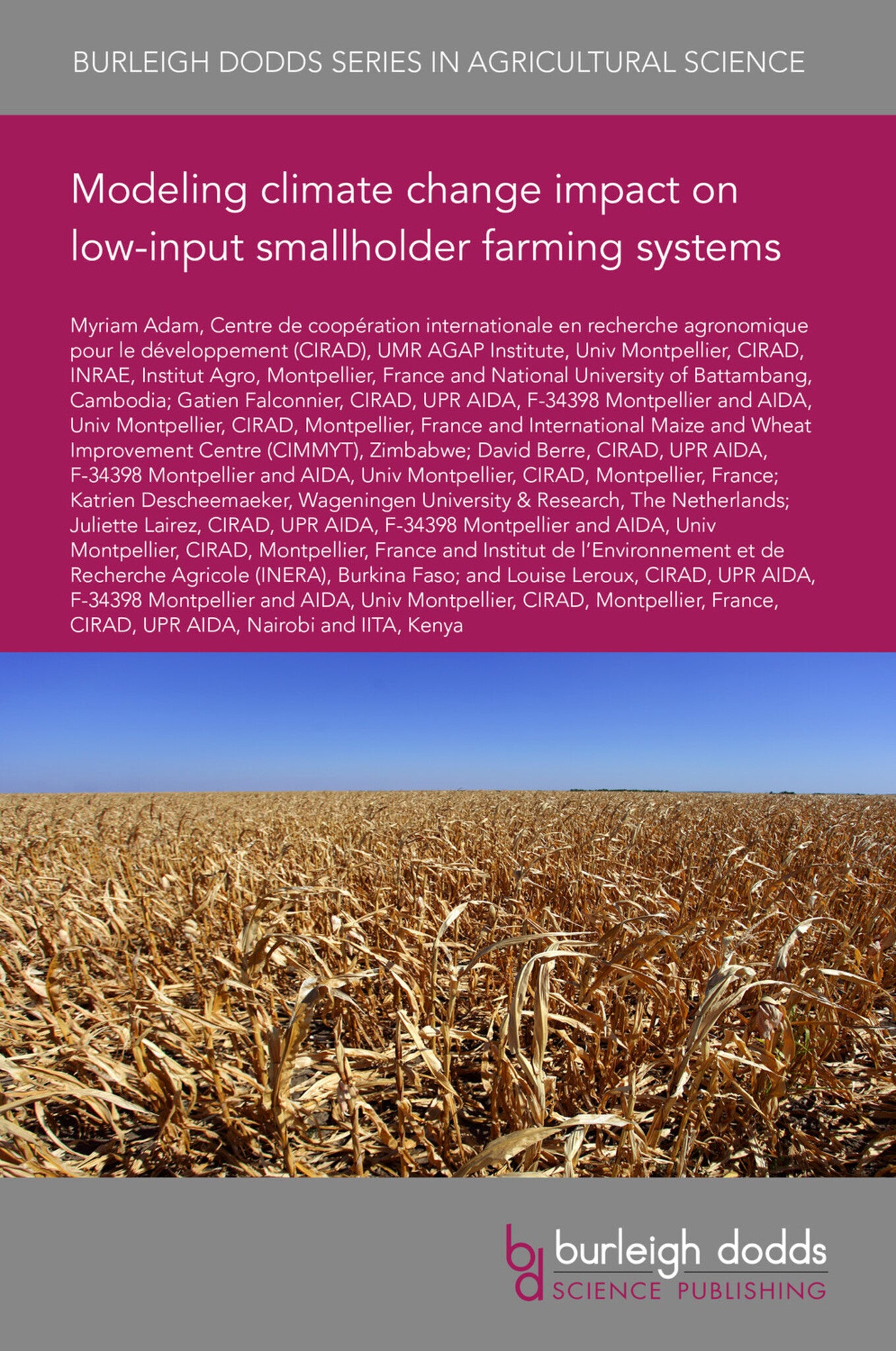We're sorry. An error has occurred
Please cancel or retry.
Modeling climate change impact on low-input smallholder farming systems

Some error occured while loading the Quick View. Please close the Quick View and try reloading the page.
Couldn't load pickup availability
- Format:
-
24 July 2023

Smallholder farming systems face many adversities including poor soil fertility, poor access to inputs, and high dependence on climate variability. On top of that, ongoing climate change is expected to exacerbate the effect of abiotic and abiotic stresses on farm performances, and poses additional challenges of adaptation to climate change. This chapter presents the effect of climate change on the different components of the farming systems (crop, livestock, grassland and tree), in the context of low-input systems. After this account, we argue on the need to have a more integrative approach to assess the effect of climate change on farming systems as a whole. We expose different approaches: coupling of models, use of optimization model. We finally highlight the importance of involving farmers in the process of using models to co-design relevant adaptations to climate change in the context of low input systems.

TECHNOLOGY & ENGINEERING / Agriculture / Sustainable Agriculture, Sustainable agriculture, TECHNOLOGY & ENGINEERING / Agriculture / Agronomy / Crop Science, SCIENCE / Global Warming & Climate Change, Agronomy and crop production, Climatology and climate modelling, Climate change, Agricultural science

- 1 Introduction
- 2 Modeling climate change effect on crops, livestock, grasslands and trees
- 3 Toward an integrative perspective
- 4 Conclusion
- 5 Where to look for further information
- 6 References



